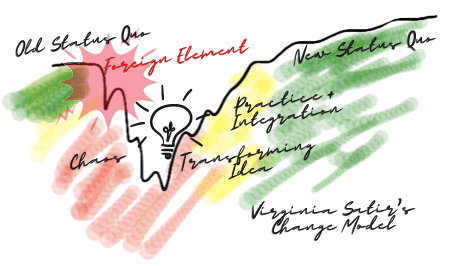Last week, I posted a mind map that shows the benefits of the team effect. But what about the costs of a team that is not doing well? A team that isn’t working well doesn’t have a neutral effect. A struggling team costs the people and the organization in engagement, quality, and money.
The Costs of a Struggling Team
8 Comments
Trackbacks/Pingbacks
- A thriving team or a struggling team? | cyberetto - [...] Derby sets out in two articles a list of features in a mind map of a well-functioning team and…
- Diagnosticando e otimizando equipes | Guilherme Veras 😉 - [...] Link: https://estherderby.com/2012/03/struggling-team.html [...]
Submit a Comment
Related

“Selforganizing agile team” may be the most over-used, misunderstood, vague, and misleading term of the...

Effective retrospectives are at the heart of team improvement. They’re the critical feedback loop for...

It is not always easy to speak up in organizations. People may think twice before...

The argument over whether specialists or generalists are more valuable to an organization has been...

When people in your company feel like they can’t speak up, everyone loses. Manager don’t...

When leaders make a change, they want buy-in. But they way they present a change...

Many job descriptions focus on skills—usually technical skills. Interpersonal skills may get a passing mention—“strong communication...

In early 2020, we experienced one hell of a change when Covid-19 swept the planet. ...
Explore more in the Library
Search by keyword or go to the Library to view content by topic or format.
Search
Explore more in the Library
Search by keyword or go to the Library to view content by topic or format.


Another good one, thx.
Love this! Thanks so much for sharing!
Apathy is like cancer for a team. It spreads and tears a team down so quickly. Probably more closely linked with disengaged people.
Great post.
Was the implication that “management intervention” is one of the negative effects of a team not doing well intentional?
In my experience, it often is, at least the “closer supervision” part. As management jump onto a team that is struggling, they often demand frequent detailed reporting, constant explanations of what is going wrong and what’s being done to correct it, and otherwise micromanaging and obstructing the team from focusing on what’s important.
“Ninety percent of what we call ‘management’ consists of making it difficult for people to get things done.” – Peter Drucker
Esther, I like the way that you made it visible how much a company can lose when a team is having problems. More then enough reasons to address problems, and solve them!
Hi, Ben –
That’s exactly why I did the mind map. People talk about the value of teams, but it’s often left as “intangible.” But it is not intangible. Both the benefits of a well-functioning team and the costs of a poorly functioning team are quantifiable.
Nice MindMap.
Would you be willing to share a version in Biggerplate.com or XMind.net
http://www.ithoughts.co.uk/iThoughtsHD/Biggerplate.html
http://www.xmind.net/share/
Hi, David –
I am not opposed to sharing it. I am new to Xmind, haven’t looked into sharing yet. What are the implications of making a mind map public?
e